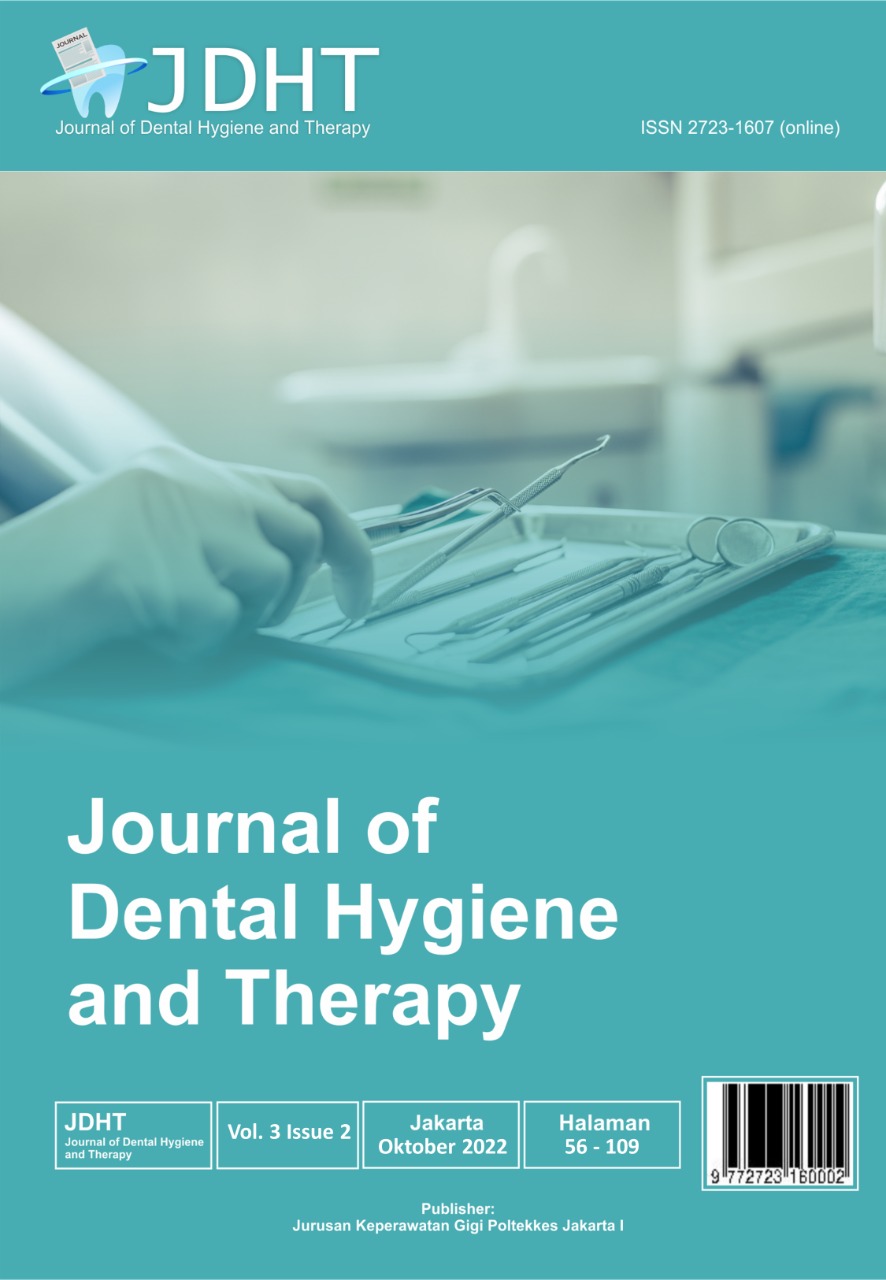RELATIONSHIP BETWEEN FREQUENCY, DURATION AND TIME OF BOTTLE FEEDING WITH RAMPAN CARIES
Keywords:
Rampan caries, bottled milkAbstract
Rampant caries is a caries that occurs in a short period of time and it usually occurs in children who have a tendency to drinking bottle milk. Bottle feeding is one of the oral bad habits and its impact depends on the frequency, duration, and time of doing it. The purpose of this study was to analyze the relationship between the frequency, duration and time of bottle feeding with rampant caries, the results can be seen by being tested through a software called SPSS. This was an analytic research study. Design of this study was a cross-sectional design with samples are children from Kemala Bhayangkari 42 Kindergarten Bandung and their parents. Samples were selected purposively and met the inclusion criteria of 32 parents and 32 children. The process of obtaining data through direct interviews with the parents of respondents using questionnaires and direct examination of respondents. The results of the chi-square test with the likelihood ratio value showed that the p-value of the frequency, duration, and time of bottle feeding with rampan caries is 0.014; 0.000, and 0.002. Conclusion: there is a significant relationship between the frequency, duration, and time of bottle feeding with rampan caries (p-value < 0.05).Downloads
Download data is not yet available.
Published
2022-10-03
How to Cite
Lestari, A. D., Putri, M. H., Restuning, S., & Laut, D. M. . (2022). RELATIONSHIP BETWEEN FREQUENCY, DURATION AND TIME OF BOTTLE FEEDING WITH RAMPAN CARIES. JDHT Journal of Dental Hygiene and Therapy, 3(2), 79–85. https://doi.org/10.36082/jdht.v3i2.719
Issue
Section
Articles
Copyright & Licensing
Copyright (c) 2022 Anisa Dwi Lestari, Megananda Hiranya Putri, Sekar Restuning, Deru Marah Laut

This work is licensed under a Creative Commons Attribution-ShareAlike 4.0 International License.
















